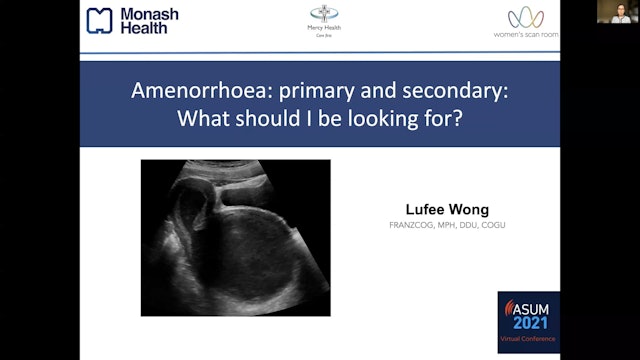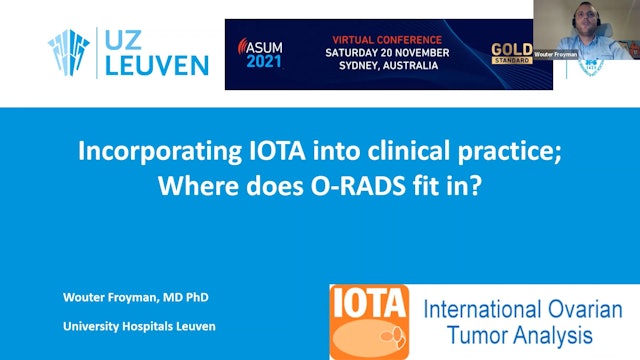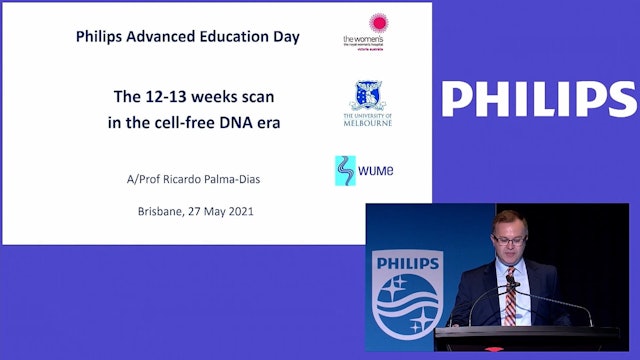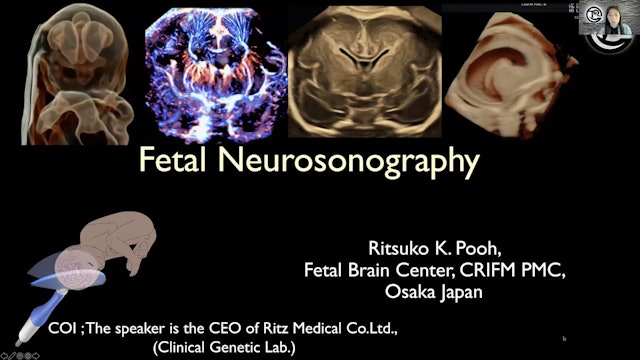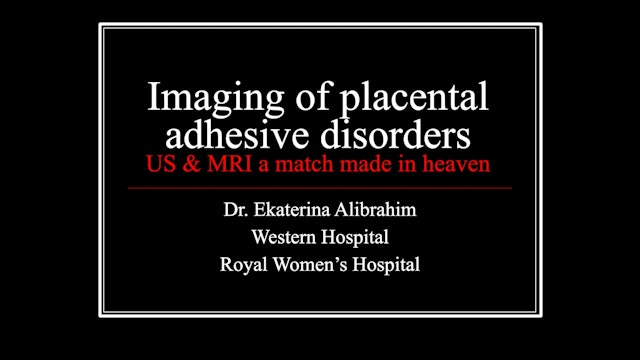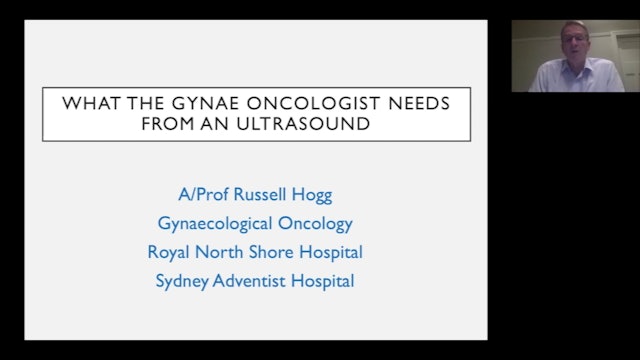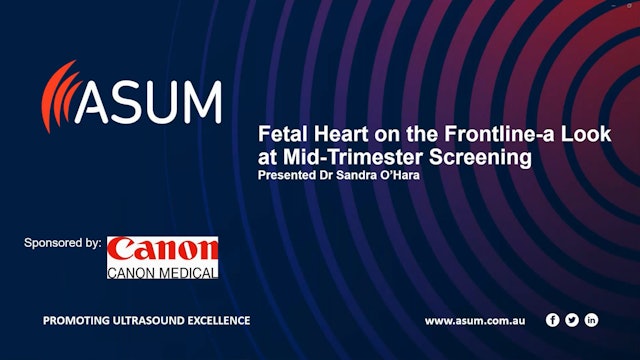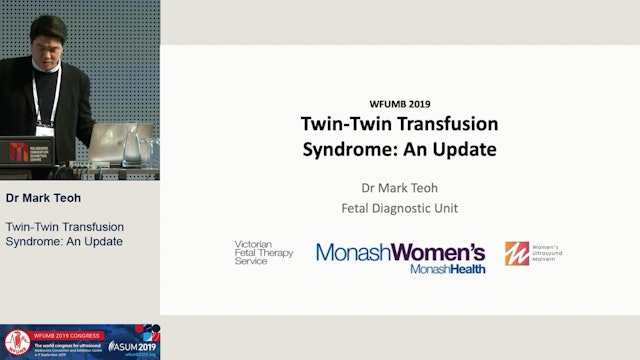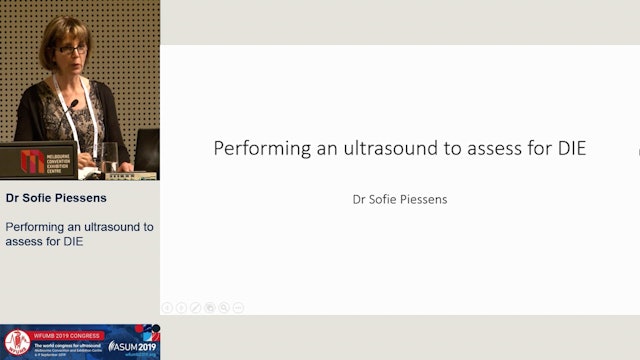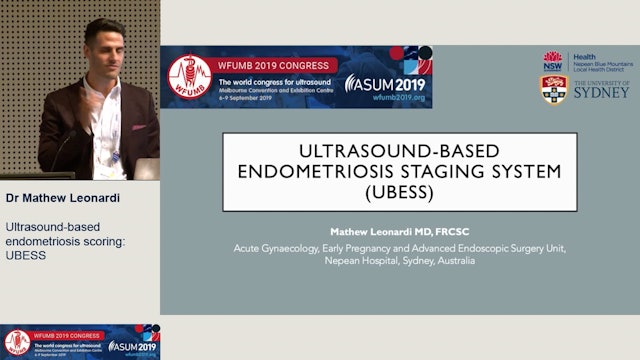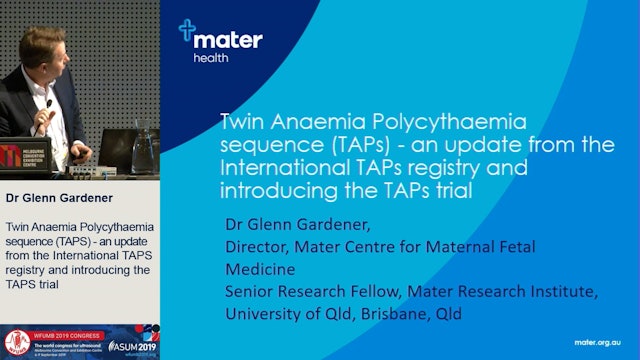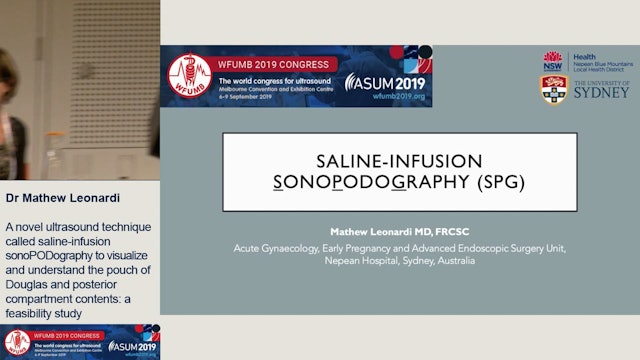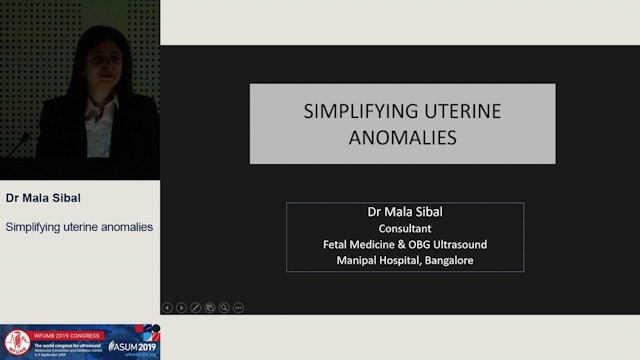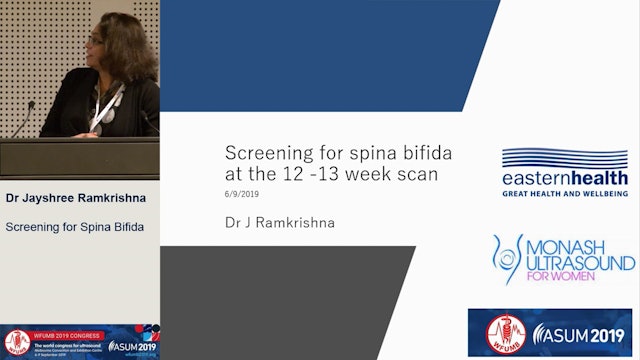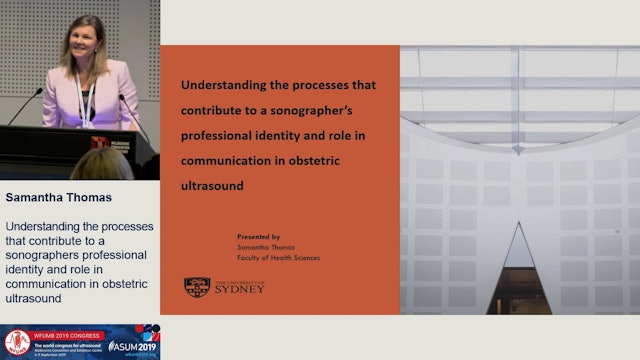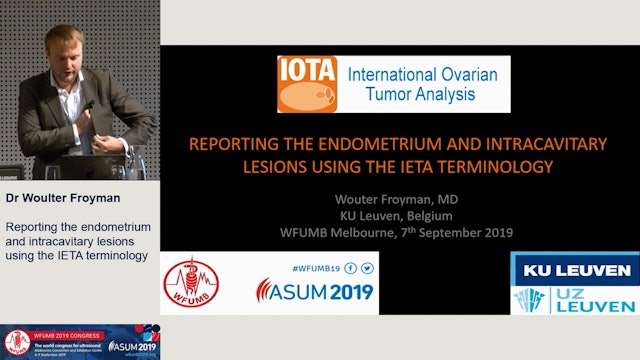O&G
-
Amenorrhoea Primary and Secondary What should I be looking for
-
Incorporating IOTA into clinical practice; Where does O-RADS fit?
-
The 12-13 weeks scan in a cell-free DNA era
-
Fetal Neurosonography
-
Imaging of Placental Adhesive Disorders
-
What the Gynaecologist Oncologist needs from an ultrasound?
-
Increased NT After Neg NIPT - What to Tell the Patient
Learning outcomes:
- the definition of an increased NT
- the diagnostic yield of chromosomal micro arrays at different NT thresholds
- the role of advanced genetic testing such as fetal exome sequencing.
- the importance of genetic counsellors in the provision of decision-support and supporting ... -
Fetal Heart on the Frontline-a Look at Mid-TRI Screening
Learning outcomes:
- In-depth outline of normal structures expected to be seen
- how to assess normality and to identify any red flags that should instigate a referral to a tertiary level institution for an in-depth assessment
- an overview of some common pathologiesan understanding that the rol... -
Predicting Risk of Malignancy in Adnexal Masses (IOTA & O-RADS)
Learning outcomes:
- to replace the term ‘complex ovarian cyst’ with IOTA nomenclature - learn about IOTA Easy Descriptors and Simple Rules
- understand how to use the IOTA Risk of Malignancy model ADNEX
-... -
Endometriosis Ultrasound Taster
Learning outcomes:
- Understand terms and definitions when doing ultrasound for endometriosis
- Understanding and appreciation of anatomical locations of deep endometriosis
- Understanding of practical applications of ultrasound in diagnosis of endometriosis. -
Ultrasound's Role in the Fertility Workup
Learning outcomes:
- Update scanning protocols in the fertility setting
- Discuss the role of 3D imaging in fertility
- Review tubal patency usage -
Fetal Brain Anatomy using 2D and 3D ultrasound
Learning outcomes:
- improve your knowledge and understanding of fetal brain anatomy throughout pregnancy
- know when to incorporate 3D ultrasound to help obtain relevant information. -
Update on laser for TTTS
-
Trauma in obstretrics
-
How ultrasound governs my surgical practice for endometriosis
-
Performing an ultrasound to assess for DIE
Endometriosis is a common and often debilitating gynaecological disorder that affects 5-10% of women. The prevalence is even higher among women with symptoms of endometriosis which include chronic pelvic pain, acquired dysmenorrhoea, dyspareunia, dyschezia, menorrhagia, abnormal bleeding and infe...
-
Ultrasound-based endometriosis scoring: UBESS
The UBESS presentation will focus on the ultrasound-based system that was developed to predict surgical level of difficulty in patients with endometriosis preoperatively. The presentation will include an overview of the system itself, the key benefits of UBESS, the studies that have demonstrated ...
-
Twin Anaemia Polycythaemia Sequence (TAPs)
Twin Anaemia Polycythaemia Sequence (TAPs) - an update from the International TAPs registry and introducing the TAPs trial
-
A novel ultrasound technique called saline-infusion sonoPODography
A novel ultrasound technique called saline-infusion sonoPODography to visualize and understand the Pouch of Douglas and posterior compartment contents: a feasibility study
-
Simplifying uterine anomalies
-
Selective growth in Twins
-
Screening for spina bifida
-
Sonographers professional identity & role in communication in obstetrics
Understanding the processes that contribute to a sonographers professional identity and role in communication in obstetric ultrasound
-
Reporting the endometrium and intracavitary lesions using the IETA terminology
The IETA (International Endometrial Tumour Analysis group) statement is a consensus statement on terms, definitions and measurements that may be used to describe the sonographic features of the endometrium and uterine cavity on grey-scale sonography, colour flow imaging and sonohysterography. The...

